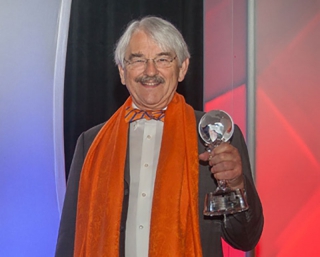Last month, we discussed encouraging research among students and we will continue with examining ways to present research to an audience focusing on oral presentations using visual aids such as PowerPoint or other vehicles. Our next topic for discussion will revolve around presenting research in writing. Visually presenting research results is different than presenting results in written papers and therefore they deserve separate Mayo Clinic articles.
Power of an Audience
The power of the audience is one of the advantages of presenting student research results to other students. Having to explain things to an audience prompts most students to be more careful and thorough in their thinking and more conscious of the structure and content of what they want to say. The anxiety of public speaking can also produce better presentations since we all know that having to teach a subject encourages us to learn it exceptionally well and think carefully about how to explain it.
The deadline to make a presentation can also spark students to fully complete their presentations and rehearse them to feel more confident about what they say and how they say it. Helping students learn to make visual and oral presentations is a valuable contribution to their overall education.
In helping students learn to create professional presentations, we need to help them consider several issues.
Voice
One of the key aspects of developing any presentation involves deciding on the tone and voice, or point of view. Should the presentation have an informal chatty and friendly tone? Should it be organized in the second-person point of view? Should the presentation be aimed at a particular group of people? Should the presentation reflect more of a formal third-person point of view with a focus on the details and the findings and less on the audience? Each perspective is valid and anyone presenting research questions and findings should pick a single tone and consistently use that voice and point of view throughout the presentation.
Structure
Creating a presentation for any audience also requires students to engage in some careful thinking about what they want to say and in what sequence. When making a PowerPoint presentation, students should think about the cover slide – or title slide – which sets the tone and style for the presentation. It should also contain the following information:
- Presentation title
- Presenter name
- Context of the presentation – course title or situation
- Presentation date
Unfortunately, many students forget to provide this information on a title slide. Some also forget to number the pages which makes it hard to refer to a particular slide when providing comments or leading the discussion.
The presentation should also be organized into sections. Here is one example:
- Research questions
- Literature findings
- Research methods
- Findings
Presentations can be organized differently – some are best focused on findings first and the rest provided as support – but students should make the decision about structure intentionally and consciously.
There are several methods to provide the audience with an awareness of the presentation structure. One technique is an agenda slide showing the sequence of various points. A second is a picture or image between each section. These slides help the students shift topics and provide a breather and organizing framework for the audience. A third method is to insert blank slides between sections, which bring attention to a shift in structure and focus.
Page Layout
Organizing slides with attention to the title and the details on the slide is also important since it helps the audience stay focused on the information that students want to present. The key points to make about each subject should be listed as bullets. If there is room on the slide, there should be images as well to reinforce the key points. Actual pictures or clip art both work; clip art often works better if the presentation is being made to a large group in an auditorium. Photographs work well in smaller settings.
If there are several slides on the same topic, the title can be repeated with a number or the word “continued.” For example, one slide might have the title Research Questions while the second slide has Research Questions (continued). Another version might have one slide with the title Findings and the second title Findings 2.
Key Aspects of any Visual Presentation
Although many of your students may have learned how to do visual presentations, it is surprising the number who never learned – or who forgot – key presentations aspects. Some important issues include:
- Insert images that: build interest, support the message, and are interesting
- Use bullets to reinforce the message
- Avoid full paragraphs since they are hard to read, and the audience can read them faster than speakers can speak them
- Use a consistent format during the entire presentation
The last slide should also be a summary – a review of the key research findings – or an invitation for questions. If references are important, then the bibliography and other references can be provided as well. They don’t tend to build interest, but they add credibility to the presentation. However, ending with a powerful last slide always improves the quality of the presentation.
Summary
I hope these suggestions will help you teach your students about making presentations. Even though the focus has been on presenting research, many of these ideas are widely applicable. Next month, we will talk about how to present research in written form. If you have suggestions for other topics or teaching practices you want discussed, send them to me at This email address is being protected from spambots. You need JavaScript enabled to view it., and I will include them in future Mayo Clinics.
Dr. Fred Mayo, CHE, CHT, is retired as a clinical professor of hotel and tourism management at New York University. As principal of Mayo Consulting Services, he continues to teach around the globe and is a regular presenter at CAFÉ events nationwide.
